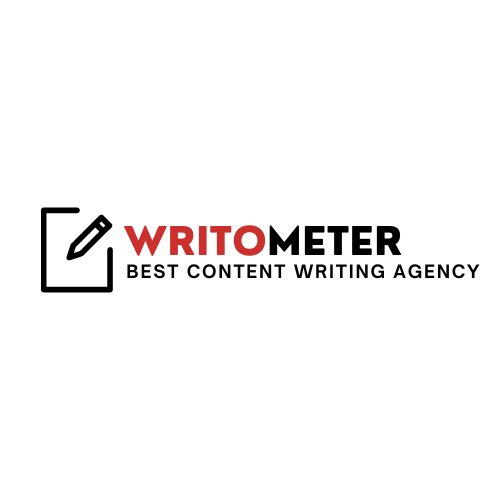Today, amazon like companies relying on data to make informed decisions. Various big brands and companies emphasize collecting data to research for a variety of purposes. This is why the data collection market size is likely to hit the growth rate of 28.9% from 2023 to 2030, according to a research.
In the era of big data, effective data collection is the linchpin of informed decision-making, innovation, and progress across various domains. Whether in business, research, or policymaking, the quality and reliability of data hinge on the methods employed. In this comprehensive guide, we explore strategies to use data collection methods effectively, ensuring meaningful insights and actionable results.
Like all big companies or brands, you also can gather crucial datasets and make effective decisions. Let’s help you to gain this ability through this how-to guide.
How-to Use Data Gathering Methods Effectively?
Let’s figure out some proven methods that have been a guide for many companies to make data-driven decisions via their collection.
1. Define Clear Objectives
Before selecting and starting gathering relevant details, you need to determine the WHY, as why you have to obtain niche-based datasets. Deeply brainstorm and find its answer while keeping the end-goal in mind. This crystal clear understanding will help you to move further with strong reasons & objectives to achieve.
2. Choose the Right Data Collection Method
The eventual goal of data gathering is to catch up with insights. Now, think of the methods that you can afford, and that they can be easily aligned with your corporate goals. You might be thinking which methods to opt in for. Here is the answer.
You can try surveys, interviews, observations, experiments, and online tools. Online surveys or contests are the best-fit methods for quantitative insights. On the other hand, interviews represent a primary method to draw qualitative data. “Observations” is another method that delivers first-hand understanding of the customer intent. You may also try the experiment method to collect testing results.
3. Design Robust Surveys
The design of the survey should resonate with your business objective. Being a quantitative methods for pooling datasets, you should deeply think and jot down clear and unbiased questions. The combination of open-ended and close-ended questions will be a smart idea to attract quantitative and qualitative insights. To ensure its success, you can run a pilot test. And fix them to relaunch that survey.
4. Conduct In-Depth Interviews
This qualitative research method is a one-on-one round between the interviewer and interviewee. Interviews are basically conducted to discover and understand personal experiences, opinions, and perspectives. So, you should write down open-ended questions to introduce convenience in drawing insights laters. You may record the interview also so that the content would be accurate, which is a key to unlock insights.
5. Harness the Power of Observations:
Observational method of collected authentic records is for pooling first-hand insights into behaviours and interactions. However, these are conducted in the natural settings precisely to record relevant details. This primary research method for collection requires protocols to be set prior so that unbiased search and analysis can take place.
6. Leverage Technology
There are multiple applications and online survey alternatives. Even, sensor technology is also there to streamline data pooling in real time. Although the case of Cambridge Analytica shows a negative impact, but its positive aspect was the ease of gathering sensitive details for emotion analysis. This way, one can add speed to the collection method.
7. Tap into Existing Data Sources:
Every company has its own pool of data. Even, individual do have their own datasets. This is simply because records are valuable. It can help in determining future strategies, provided that your records are all clean. For this purpose, you have to bring all records at a place through data integration method and pass them through cleansing.
8. Pilot Testing
Pilot testing is not a collection method, but a way to determine potential issues or challenges. So, you can start a small scale trial of any data gathering method. While doing so, several shortcomings in survey questions, interviews, etc. can be observed and highlighted to fix as per responses. This way, you can ensure an effective data pooling.
9. Monitor Data Quality:
Data won’t help in making right decisions unless they are clean and accurate. To ensure their hygiene, you should conduct a validation process as per defined criteria. Follow this process religiously so that no missing detail or imperfection can ever lead to bad decisions.
10. Seek Feedback:
Feedbacks carry crucial details like customer intent, their preferences, grievances, likelihood, and more emotions. You should encourage the practice of sharing feedback. It can enrich you with genuine data of your customer experiences, what improvements you need to do, and refine your strategies. This is the main purpose of data collection and analysis services. So, you should always focus on obtaining it.
Bonus Tips:
Document the Process
Maintaining documents meticulously is the best practice, which saves you from making unreal decisions. With all records in place on time, you can access insights for in-depth study. The comprehensiveness of your records guide you to make failsafe decisions that can multiply your efficiency, revenue, and productivity.
Continuous Training and Development
The training and evolving new data collection methods and technologies can help speeding up data gathering process. Therefore, investing in these developments is necessary. Also, these automation methods can help in optimizing the efficiency of the latest tools and technologies.
Validate and Cross-Verify
Keeping your collected records clean and validated is an outstanding idea to continue having fresh and relevant records, which remain ready-to-use. For this purpose, you have to ensure that inconsistencies are consistently filtered out every day or weekend to avoid corrupt entries. It strengthens their credibility, which leads to realistically useful results.
Conclusion
Data collection is actually a crucial process, which requires specific strategy in accordance to the target tools or methods. Meticulous planning, strict protocols, and rigorous execution of the proven strategy for data gathering are essential to follow. While doing so, you should be very particular and also ethically right. It means that the collected details should be used with premium quality to draw meaningful insights. This happening will certainly generate valuable results that contribute to the pre-decided goals or objectives.

WritoMeter is a seasoned content creator, a leading content writing services provider. With a passion for storytelling and a knack for turning ideas into engaging narratives, WritoMeter bring a wealth of experience to the world of digital content. For any types of content writing services contact us on info[at]writometer.com.

